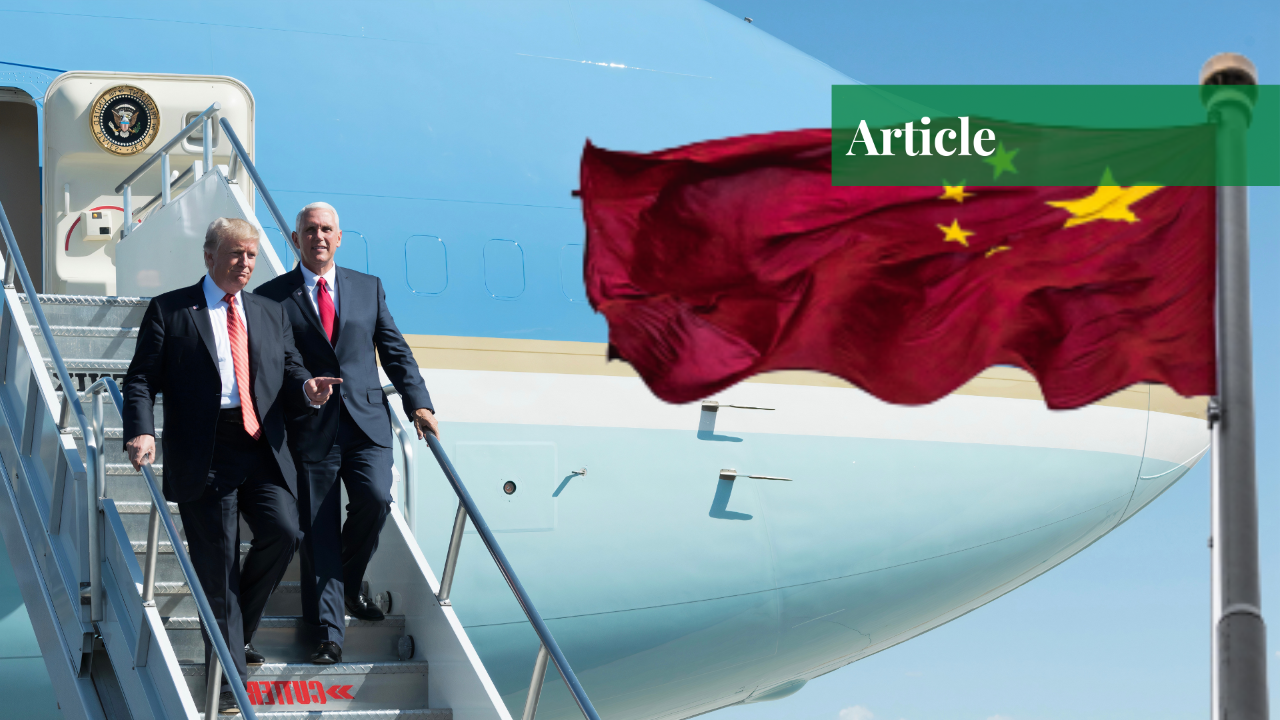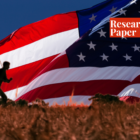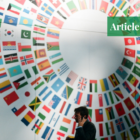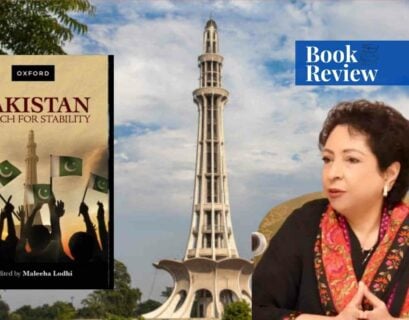Mr. Dawood Naseem is currently doing his bachelor's in international relations from University of Management and Technology, Lahore. The writer is looking forward to a career in writing for current affairs and Pakistan affairs.
Preface
Sino-US relations in the Trump era had fluctuations that started with skepticism which then turned into a trade war. Along with the Sino-US trade war, a race for 5G emerged which resulted in Huawei, one of the greatest tech companies in China, being banned by the US. All of this then turned normal and even close relations were seen for a short period after the signing of a trade deal known as the Phase One deal between China and the US.
These good relations took a sharp turn when Covid-19 reached US soil. The extreme relations resulted in Trump calling Covid-19 a ‘Chinese virus’ and even election mandates of both Biden and Trump in 2020 elections included blaming each other as a friend to China.
Historical Background
The People’s Republic of China was formed under the communist flag in 1949. Of course, this was not taken lightly by the US which was leading its fight against communism. So, the US implemented its containment policy (to completely contain a country in the international arena) towards China. Under this policy, US-made alliances like SEATO to deter China in the South China sea and help South Asian countries to remain away from communism.
Alliances were also made with Japan, South Korea, and Taiwan so the US could gain its hold on Asia and contain Russia and China. A US alliance with New Zealand and Australia named ANZUS was also made for this purpose. Not only military alliances but the US also used its soft power tactics to influence and pressure other nations to keep away from making dealings with China.
To make things worse, China and the United States were engaged in a war in the Korean peninsula fighting each other’s forces. China assisted North Korea in repelling United Nations forces. These forces contained about 90% of American troops. So indirectly, both nations were engaged in a war with each other.
The United States also began to support Taiwan which China considers its integral part. China and USSR fell apart which is also considered as a success of American policy ‘Wedge strategy’ towards both of them to destroy good relations between them and make them skeptical of each other. In 1972, President Nixon of the US visited China to resolve bitter relations.
President Nixon also signed the One China policy which stated that there was but one China and that Taiwan was not a free country and only a part of China. The US, however, kept its support for Taiwan unofficially and informally. The US approached China only because it desired for China to move out of the Soviet bloc. (Nathan n.d.)
Their full diplomatic relations started in 1979. This was also the time when China implemented its ‘reform and opening’ policy under which it changed its economic structure and economic dealings. From this time, the growth of China started, and also US and China relations kept growing under the shadow of mutual trade.
Their relations remained steady with the exception of a few hiccups like the time when NATO under the leadership of the US accidentally bombed the Chinese embassy in Belgrade in 1999. China captured a US spy plane in 2001 which was ultimately given back to the US after negotiations. (U.S. Relations With China, n.d.)
In 2010, China became the second-largest economy; China’s mega-project, the Belt and Road Initiative (BRI), alarmed the US of its potential impacts. China’s growth of influence and economy is a danger to US hegemonic status and the US is completely aware of this. (Belt and Road Initiative n.d.)
Sino-US Trade War
As discussed above, the relentless economic growth of China in the last 3 decades launched concerns within the US establishment over China’s rise. This growth became more prominent after 2010 when China surpassed Japan as the second-largest economy in the world and now it can challenge the hegemonic status of the US.
In 2016, then-candidate Donald Trump blamed policies made with China to result in intellectual property theft and loss of manufacturing jobs in the US. In his election mandate, he gave affirmation to deal with the trade deficit with China which in 2016 stood at $346 billion. For this purpose, the US confronted China at Mar-a-Lago, a State in Florida, when President Xi Jinping visited the US to make a 100-day plan to deal with trade differences.
The basic aim behind US intentions was to counter Chinese economic growth. China agreed to open its economy for US businesses if the US agreed to recognize the Belt and Road Initiative. This 100-day plan was not a success and it ended in July 2017 with no result, as both sides wanted more than what was being offered by each one of them.
Trump launched a trade war with China to pressure it in accepting US terms. He argued that tariffs would result in pressure on China to accept terms while also forcing companies to bring back jobs to US soil. As a result, between July 2018 to August 2019, the US imposed tariffs on about $550 billion Chinese manufactured goods. In retaliation, China imposed its tariffs on about $185 billion US products.
This move by China was not anticipated by the Trump administration and resulted in an intensification of the Sino-US trade war and its impact was felt on the world economy. “US economic growth slowed, business investment froze, and companies didn’t hire as many people. Across the nation, a lot of farmers went Bankrupt, and the manufacturing and freight transportation sectors have hit lows not seen since the last recession. Trump’s actions amounted to one of the largest tax increases in years” (Denmark, n.d.).
Bloomberg Economics study found that the US would lose up to $316 billion by 2020. A recent study found that at least $1.7 trillion in stocks were lost by the US as a result of the trade war with China. Even the Trade deficit for the US did not decrease. Farmers of the US lost much of their $24 billion markets in China as China now started to fulfill its ration demand from other countries.
The trade deficit between the US and China rose to its highest level of $420 billion in 2018 when tariffs were imposed by both sides, but then it shrunk to $345 billion in 2019 when companies from both sides started to reach other countries for business dealings as they were losing a really large margin in profit from this no-goal Sino-US trade war (Denmark 2020).
After both were exhausted from this trade war and tariff imposing game, in January 2020, both signed the Phase One deal which Donald Trump used to call the biggest trade deal. This trade deal included increased good purchases by China of about $200 billion more US goods, more protection on intellectual property theft, and stop forced technology transfer.
The US administration took this deal as a winning point and as a result, US and China relations not only cooled down but also became better. China now faced less criticism by the US on issues of human rights. When Laura Ingraham of Fox News, in January 2020, questioned President Trump over the issue of Chinese human rights violations specifically referring to the Chinese handling of the situation of 1 million Uyghur Muslims, who were locked down in reeducation and internment camps, Trump replied that they are making a fine trade deal with China.
The true winners of this deal are not China or the US but other countries like Vietnam, Mexico, Taiwan, and the European Union. Before the Sino-US trade war, about 23% of imports to the US came from China which in 2019 was reduced to 18%. This means that when US consumers had to pay more for Chinese products, they started to fulfill this demand from other countries. This resulted in other countries increasing their exports resulting in more profits.
More of about 4.7$ billion in the price of exports was transferred to the US by Mexico in two years of conflict. Similarly, Vietnam even exported more as compared to Mexico and gained about 6.4$ billion worth of products by exporting to the US. Before the trade dispute, China was the main exporter of computers to the US amounting to about 64%, but this was reduced to 44%.
On the other hand, Taiwan supplied about 10% of US demand for computers and Mexico supplied about 25%. In the same way, electronics supply by China to the US declined to 15%, while Vietnam exported 30% more to the US in electronics from 2017 to 2019. The spillover effect was concentrated in Asian countries that can make similar or intermediate products as Chinese products. (Laskowski, n.d.)
5G warfare
This war started on 1st December 2018 when the Chief financial officer of Huawei, Meng Wenzhou, was arrested in Canada at the US’s request. The charges included dealings with Iran under violations of trade sanctions and demanded her extradition to the US. In retaliation, China detained two Canadian citizens and demanded the immediate release of Ms. Meng.
It is noteworthy here to mention that Huawei is the biggest tech and electronic company in China which is competing for the largest phone industries in the world and also in 2018, Huawei surpassed Apple which is the US’s largest counterpart. Huawei was already declared a national security threat by the CIA and this prompted the US to take strict actions against Huawei, starting from the arrest of its chief financial officer, and then banning Huawei next year.
Huawei in retaliation sued the US administration in a lawsuit, causing American companies to refrain from using Huawei equipment. On May 15, 2019, Trump signed an executive order which blacklisted Huawei and 68 affiliate companies to work in the US; this also precluded US companies from making dealings with Huawei and share technology. The charges were, as discussed earlier, a threat to national security.
The biggest aftershock of this ban was seen when Google revoked its license of android to Huawei phones. This was the greatest blow to Huawei as Huawei had no alternative to Google software, but Huawei started to build its software including its apps. All of this fuss was seen as a tactic by the Trump administration to stop Huawei from launching 5G because this new technology not only meant that Huawei would become the greatest tech firm but it also meant increased Chinese cyberwar capabilities.
This also affected Apple which has its manufacturing industry built-in Chinese land. Apple’s export of mobiles fell 17% from 2018 as a result of the Sino-US trade war and Chinese retaliation to US tactics. Huawei, no doubt, must be guilty of spying and stealing data, but the same is the case with American companies.
Two factors over which the US harshly dealt with Huawei was to gain leverage in this trade deal dealing with China, and the other was because of the race of 5G as future robotics, artificial intelligence, space, cyberspace, surveillance, media, driverless cars, communication, big data, and mechatronics. However, Huawei was able to launch 5G technology in September nearly 3.5 months after its ban.
Conclusion
The US so far has succeeded in changing the public opinion of its people against China, as polling by Pew Research Institute found that 78% of Americans blame China for the spread of this pandemic. China’s handling of Uyghur Muslims and its human rights violations in Hong Kong have brought strong opposition against China’s internal policies. It cannot be wrong to say that China is winning its domestic conflicts, but these conflicts and policies are losing the international battle for China. (Conrad, 2020)
To finally conclude the Trump era with China, this era can be said to have conflicts and direct threats from both sides. It started with a conflict of trade, then a lull in between before the pandemic embittered relations. President Joe Biden must reestablish a rational dialogue model with China (especially reviving Track 1 and Track 2 diplomacy) and normalize the crisis.
References
- n.d. Belt and Road Initiative. .
- n.d. Chronology of U.S.-China Relations, 1784-2000. .
- Conrad, Justin. 2020. US Public Opinion Is Changing the Relationship With China. September 16. https://thediplomat.com/2020/09/us-public-opinion-is-changing-the-relationship-with-china/.
- Denmark, Ryan Hass, and Abraham. 2020. More pain than gain: How the US-China trade war hurt America. August 07. https://www.brookings.edu/blog/order-from-chaos/2020/08/07/more-pain-than-gain-how-the-us-china-trade-war-hurt-america/.
- Krasner, Micheal C. Webb and Stephen D. 1989. “Hegemonic Stability Theory: An Empirical Assessment.” Review of International Studies 183-198.
- Laskowski, Christine. n.d. The real winners of the US-China trade dispute. https://www.dw.com/en/the-real-winners-of-the-us-china-trade-dispute/a-55420269.
- Nathan, Andrew J. n.d. U.S.-China Relations Since 1949. http://afe.easia.columbia.edu/special/china_1950_us_china.htm.
- n.d. U.S. Relations With China. https://www.cfr.org/timeline/us-relations-china.
If you want to submit your articles and/or research papers, please check the Submissions page.
The views and opinions expressed in this article/paper are the author’s own and do not necessarily reflect the editorial position of Paradigm Shift.



















